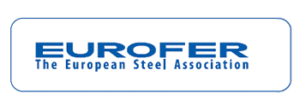Brussels, 28 November 2018 – The European Commission today launched its long-term EU greenhouse gas emissions reductions strategy. The strategy ‘brings forward a vision of a low carbon economy that protects the planet, defends its people and empowers the economy’, according to the institution. The European Steel Association (EUROFER) has noted the strategy but it is clear that there needs to be a more detailed assessment of its implications.
Axel Eggert, Director General of EUROFER said, “The document describes different scenarios, the implications of which will require in-depth assessment before any decisions can be taken”.

“The EU is responsible for 10% of global emissions so it is imperative that this strategy is seen as a part of committed, collective action, on a global level”, added Mr Eggert.
“There are priorities to be agreed if the long-term strategy is to succeed in its aim. Chief among these is the need to secure sufficient, reliable and competitively-priced low-carbon energy, alongside the required input materials”, emphasised Mr Eggert. “Steel alone would require an additional 400TWh of electricity by 2050 if all of its low-carbon projects were to be deployed. We need clear mapping of these requirements”.
The strategy also needs to identify and mobilise investment from both public and private sources for the demonstration, scale-up and commercialisation of breakthrough technologies.
Mr Eggert stressed, “Industrial-scale innovation is really expensive. Industry is ready to invest but cannot viably go it alone. We must be supported in this journey with public sources of investment, such as Horizon Europe and similar funds”.
Finally, the EU steel sector’s global competitors will not sit still. As it is, the EU already imports over 26 million tonnes of steel from countries without comparable climate policies. Low-carbon investments are long-term propositions. Before any benefits are reaped, these additional costs will hamper our competitiveness compared to non-EU players and risk undermining the environmental integrity of EU policies.
“Therefore, a third priority – one that needs be handled by policymakers as soon a possible – must be to build a regulatory framework preserving the level playing field for energy-intensive sectors facing international competition, such as steel. EU steel imports need a decarbonisation cost signal at the level facing EU producers resulting from EU rules. Exports also need to be addressed to give such a signal to the global market”, emphasised Mr Eggert.
“The EU needs a coherent plan that backs-up its aims with the means to achieve them”, concluded Mr Eggert. “This strategy is a first step towards this”.
About the European Steel Association (EUROFER)
EUROFER AISBL is located in Brussels and was founded in 1976. It represents the entirety of steel production in the European Union. EUROFER members are steel companies and national steel federations throughout the EU. The major steel companies and national steel federations in Switzerland and Turkey are associate members.
About the European steel industry
The European steel industry is a world leader in innovation and environmental sustainability. It has a turnover of around €170 billion and directly employs 320,000 highly-skilled people, producing on average 160 million tonnes of steel per year. More than 500 steel production sites across 22 EU Member States provide direct and indirect employment to millions more European citizens. Closely integrated with Europe’s manufacturing and construction industries, steel is the backbone for development, growth and employment in Europe.
Steel is the most versatile industrial material in the world. The thousands of different grades and types of steel developed by the industry make the modern world possible. Steel is 100% recyclable and therefore is a fundamental part of the circular economy. As a basic engineering material, steel is also an essential factor in the development and deployment of innovative, CO2-mitigating technologies, improving resource efficiency and fostering sustainable development in Europe.
